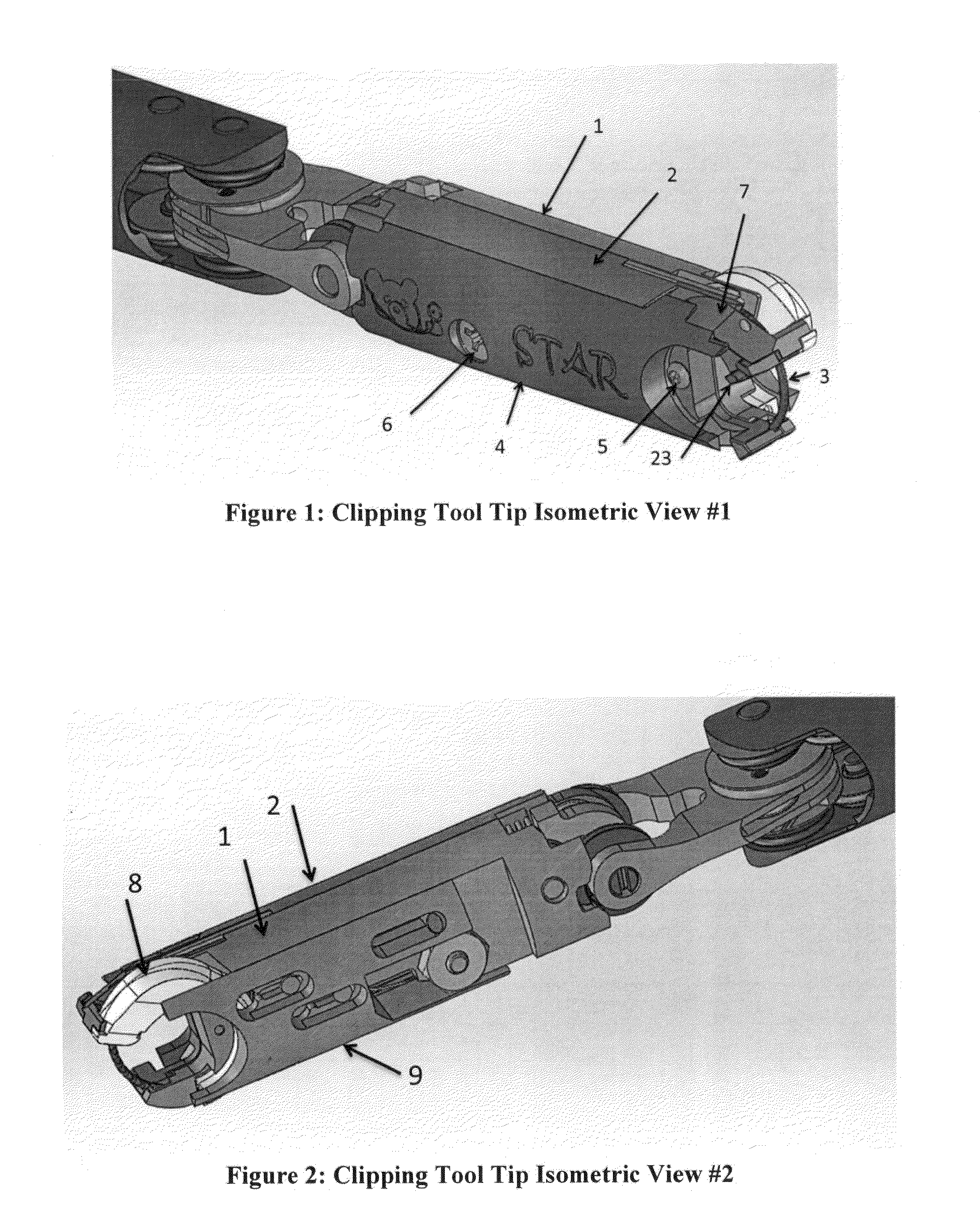Anastomosis clipping tool with half-loop clip
a clipping tool and clipping tool technology, applied in the field of apparatus, system and method, can solve the problems of unusable standard tools, few surgeons who are able to perform, and pediatric surgery faces access and space challenges not found in adult patients, so as to minimize the dependence on surgeon dexterity and experience, and reduce the time of procedure and operating cost
- Summary
- Abstract
- Description
- Claims
- Application Information
AI Technical Summary
Benefits of technology
Problems solved by technology
Method used
Image
Examples
Embodiment Construction
[0096]Referring to the drawings, like reference numerals designate identical or corresponding parts throughout the several views.
[0097]The figures are not to scale, and some features may be exaggerated or minimized to show details of particular elements, while related elements may have been eliminated to prevent obscuring novel aspects. Therefore, specific structural and functional details disclosed herein are not to be interpreted as limiting, but merely as a basis for the claims, and as a representative basis for teaching one of ordinary skill in the art to variously employ the present invention.
[0098]The illustrative embodiments described herein are directed to a surgical apparatus, system, and method for fastening tissue. As required, embodiments of the present invention are disclosed herein. However, the disclosed embodiments are merely exemplary, and it should be understood that the invention may be embodied in many various and alternative forms.
[0099]The tool described herein...
PUM
 Login to View More
Login to View More Abstract
Description
Claims
Application Information
 Login to View More
Login to View More - R&D
- Intellectual Property
- Life Sciences
- Materials
- Tech Scout
- Unparalleled Data Quality
- Higher Quality Content
- 60% Fewer Hallucinations
Browse by: Latest US Patents, China's latest patents, Technical Efficacy Thesaurus, Application Domain, Technology Topic, Popular Technical Reports.
© 2025 PatSnap. All rights reserved.Legal|Privacy policy|Modern Slavery Act Transparency Statement|Sitemap|About US| Contact US: help@patsnap.com



